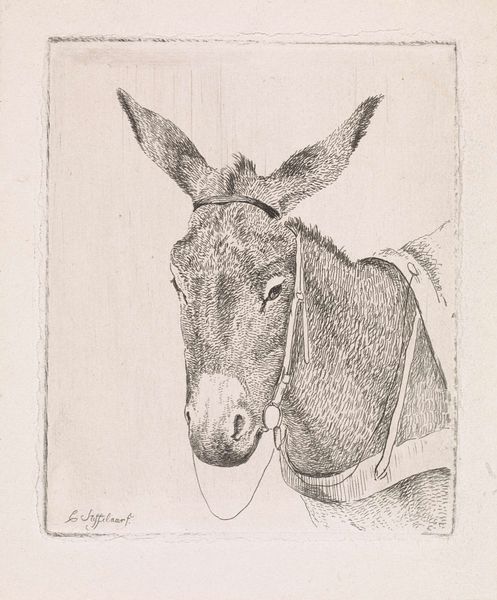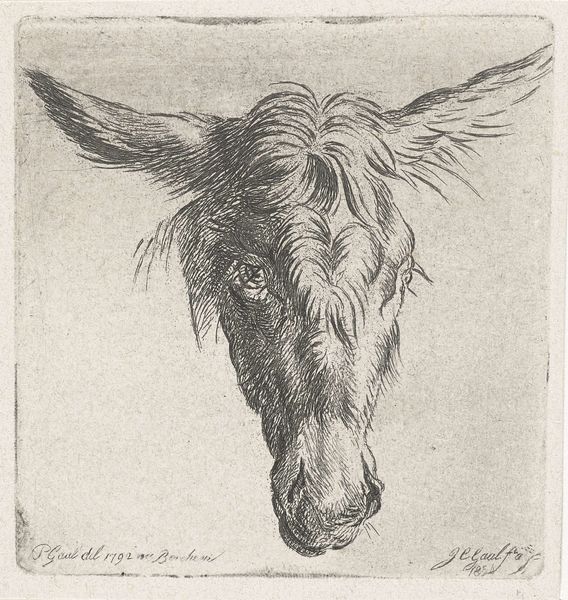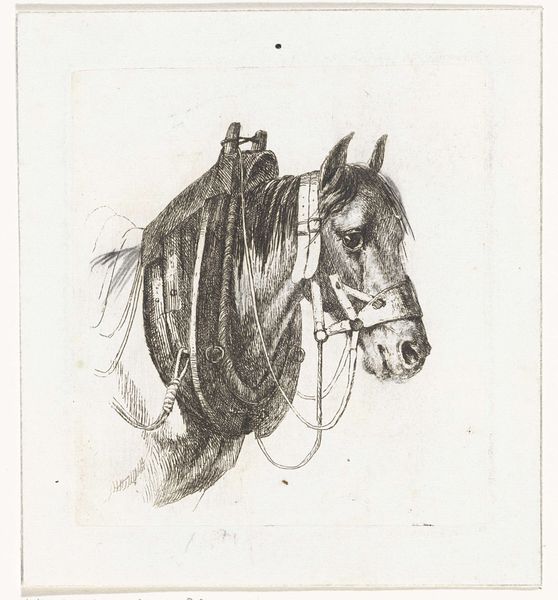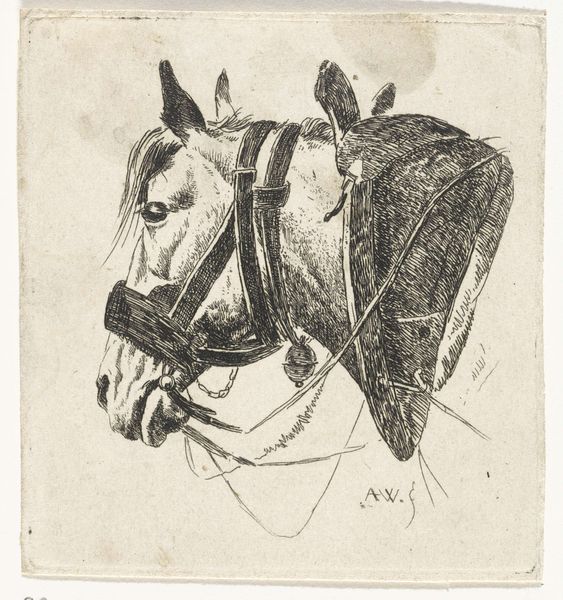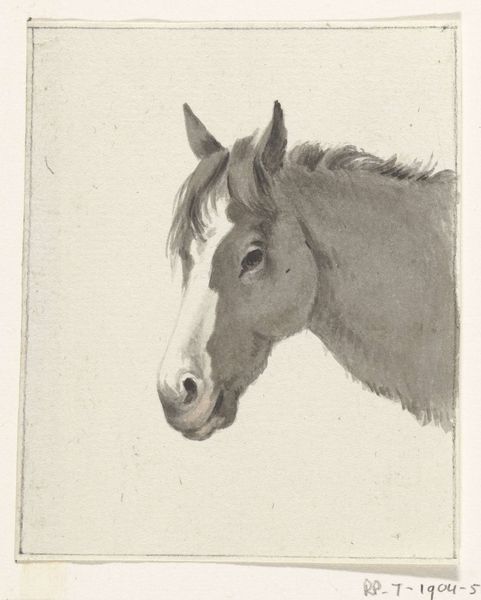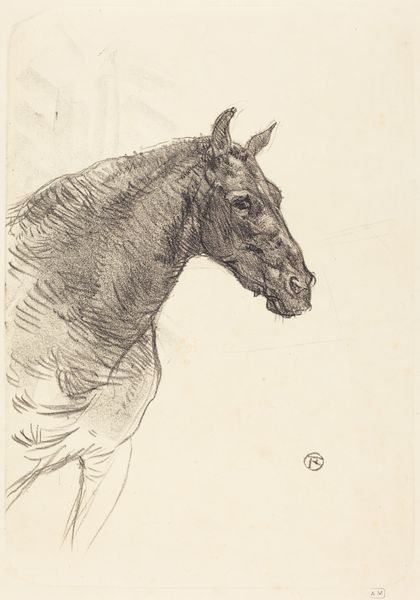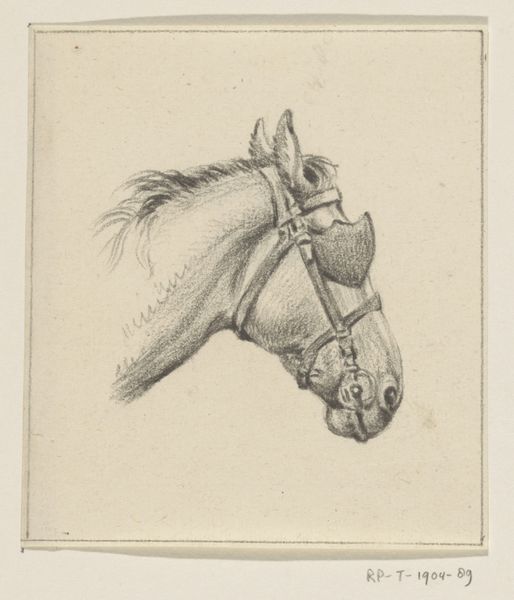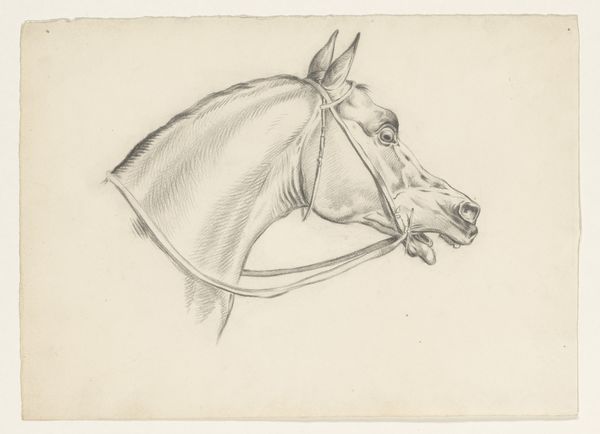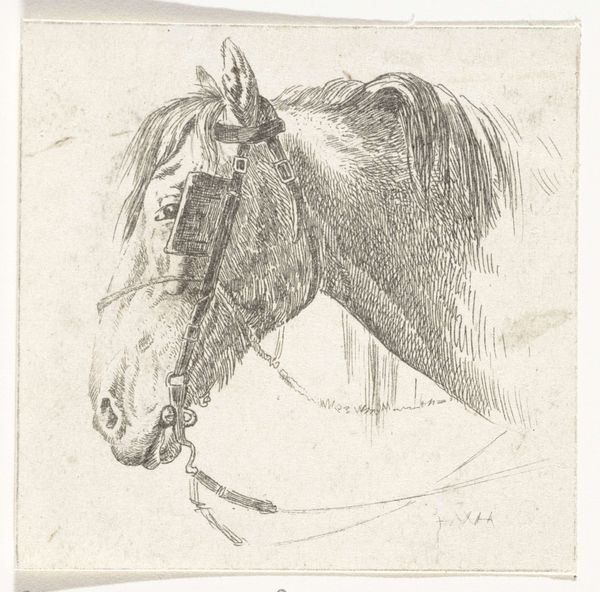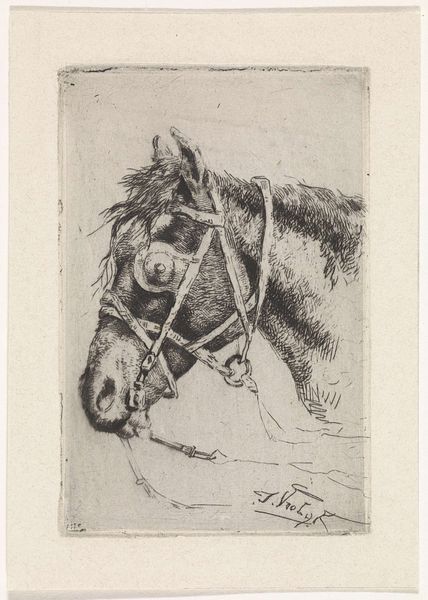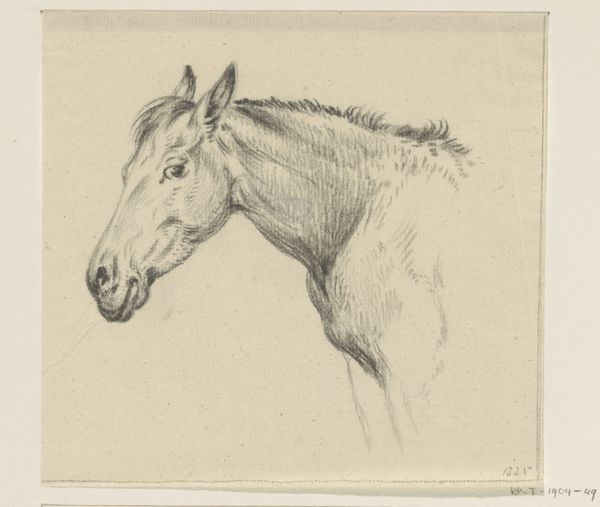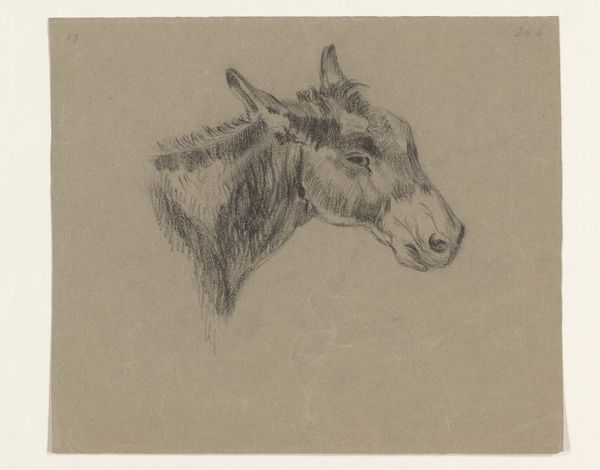
drawing, print, etching
#
portrait
#
drawing
# print
#
etching
#
pencil sketch
#
pencil drawing
#
realism
Dimensions: height 84 mm, width 69 mm
Copyright: Rijks Museum: Open Domain
Editor: So, here we have "Ezelskop," which translates to "Donkey's Head," by Cornelis Steffelaar, likely created sometime in the mid-19th century. It’s an etching, giving it this wonderful, detailed, almost photographic quality. What strikes me is its serious expression – not what you'd expect from an animal portrait. What do you see in this piece, Professor? Curator: The image resonates with historical symbolism far beyond its deceptively simple subject. Donkeys, often burdened animals, historically signify humility, patience, and even stubbornness across diverse cultures. Steffelaar captures the weight, almost the sorrow, in the donkey's eyes. Note the bridle and harness – instruments of control. Do you see a connection here between the animal’s posture and implied burdens? Editor: Yes, the harness definitely hints at labour and subservience. The detail is really remarkable considering it's an etching; those lines seem to convey a sense of weariness. Was this a common subject matter at the time? Curator: While individual animal portraits weren’t necessarily typical, the symbolic use of animals as stand-ins for human characteristics was widespread, finding root in fables, moral allegories, and even political cartoons. Steffelaar's "Ezelskop," therefore, taps into a potent visual language that viewers of his time would likely have recognized. Consider the expression; it surpasses mere realism, hinting at sentience, burden, and maybe even silent suffering. Does it trigger feelings of empathy? Editor: Absolutely, the eyes do seem incredibly expressive. It almost feels like it's more than just a donkey portrait; maybe it's meant to reflect the struggles of the working class? Curator: Precisely. By imbuing this donkey with such poignant detail, Steffelaar could be subtly critiquing social structures, or perhaps reflecting on universal themes of labour, resilience, and the inherent dignity of all living creatures, burdened or free. Editor: That really changes how I see it. It's more than just an animal study; it’s a loaded symbol. Curator: Exactly! Images, even seemingly straightforward ones, hold complex layers of meaning shaped by culture, history, and our own experiences. It reminds us to look beyond the surface.
Comments
No comments
Be the first to comment and join the conversation on the ultimate creative platform.
